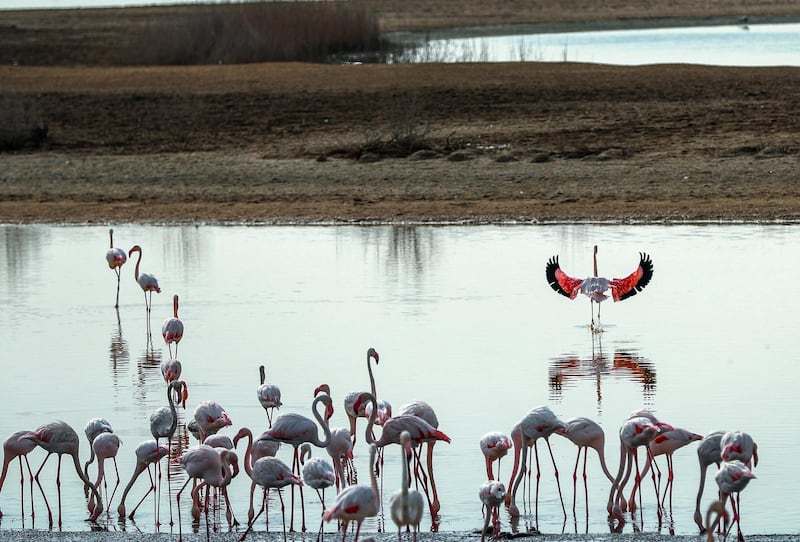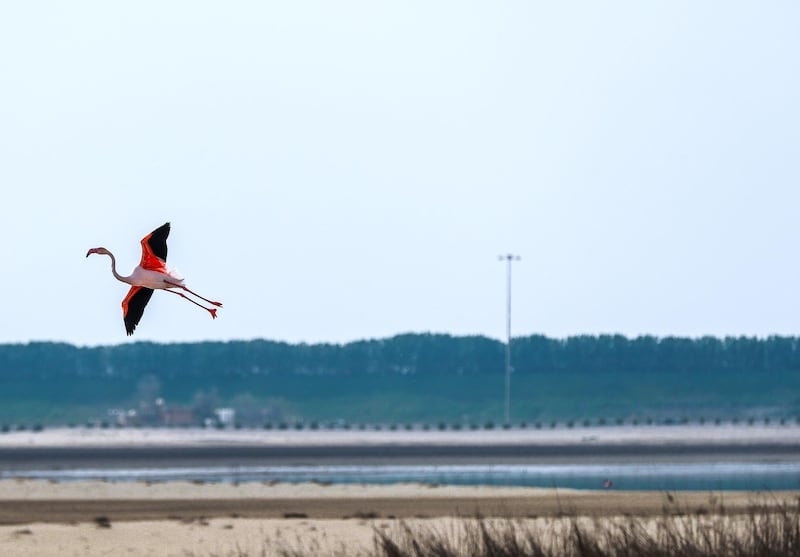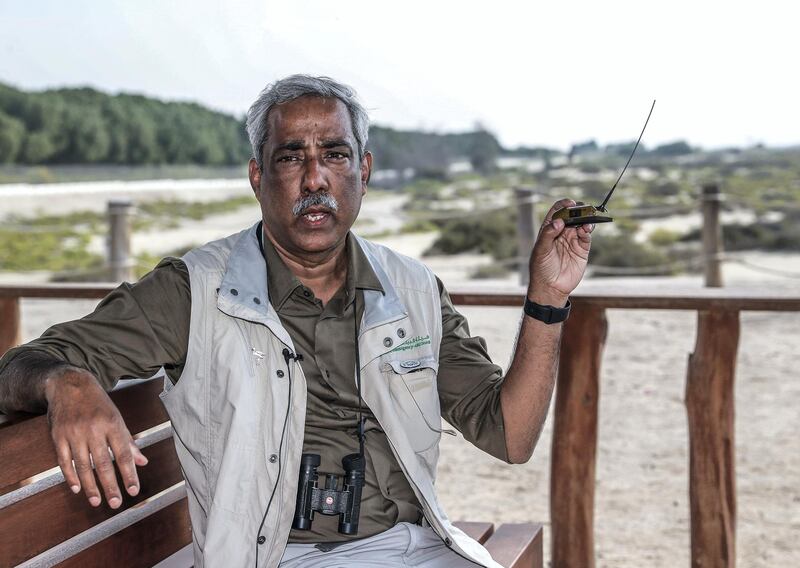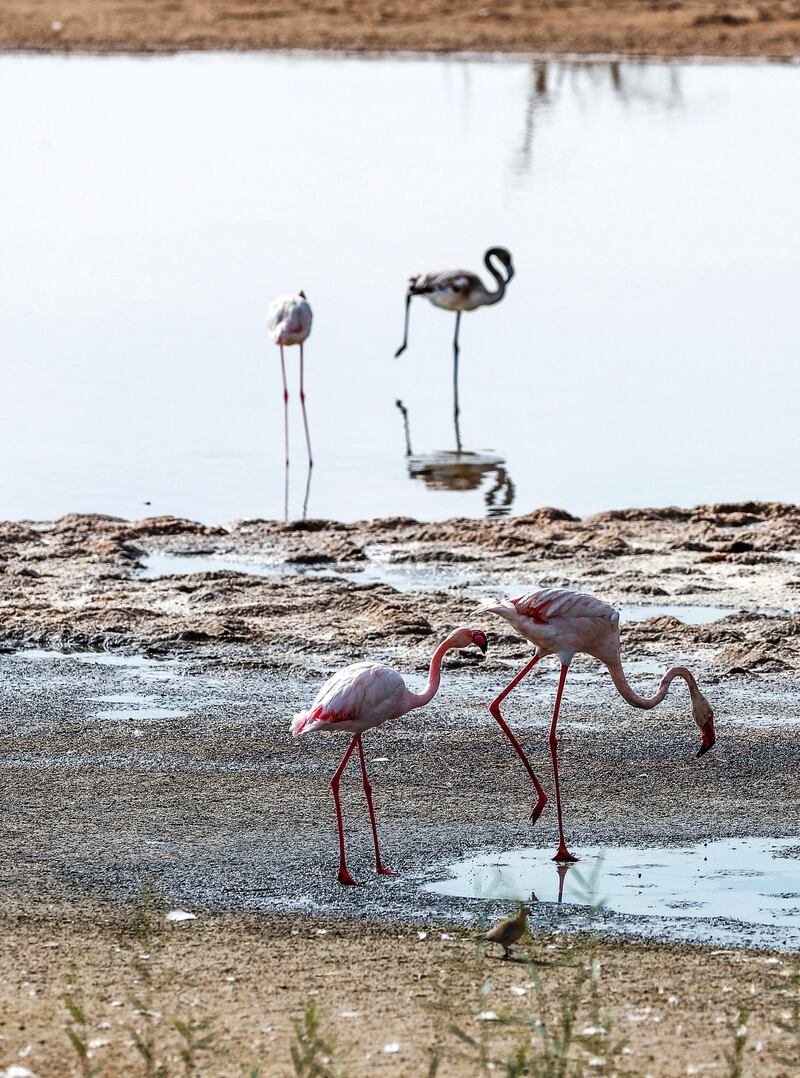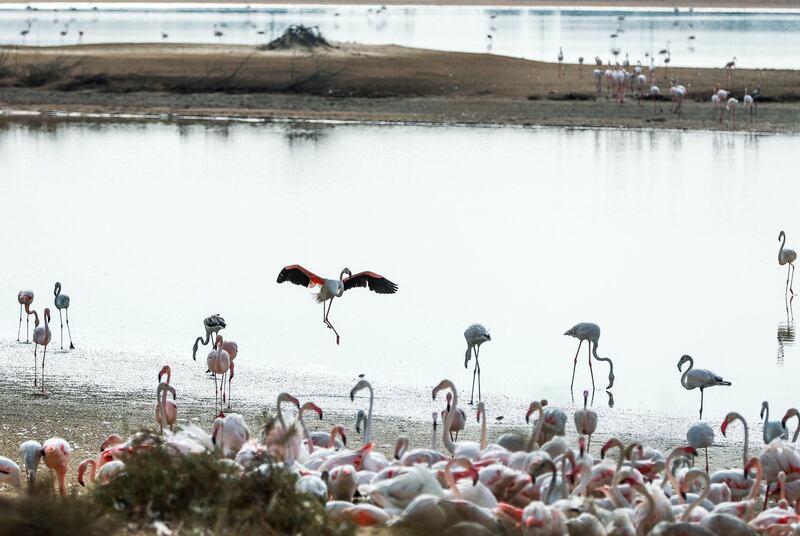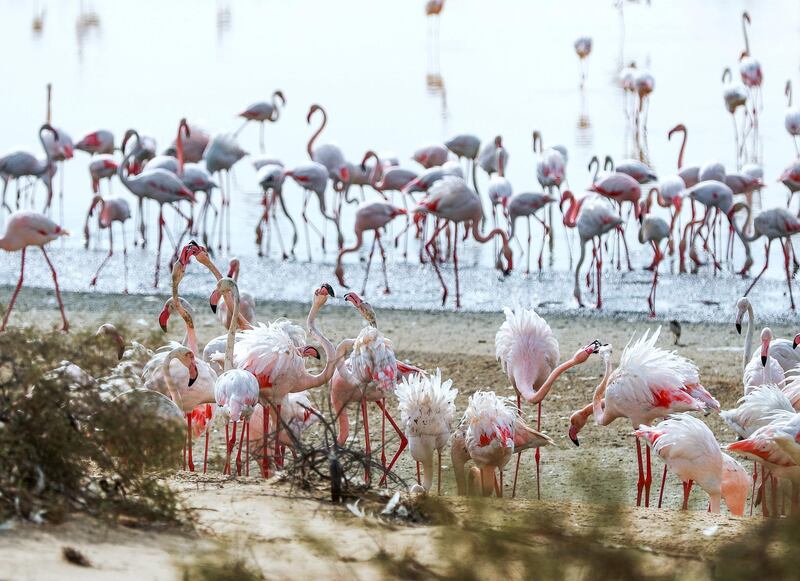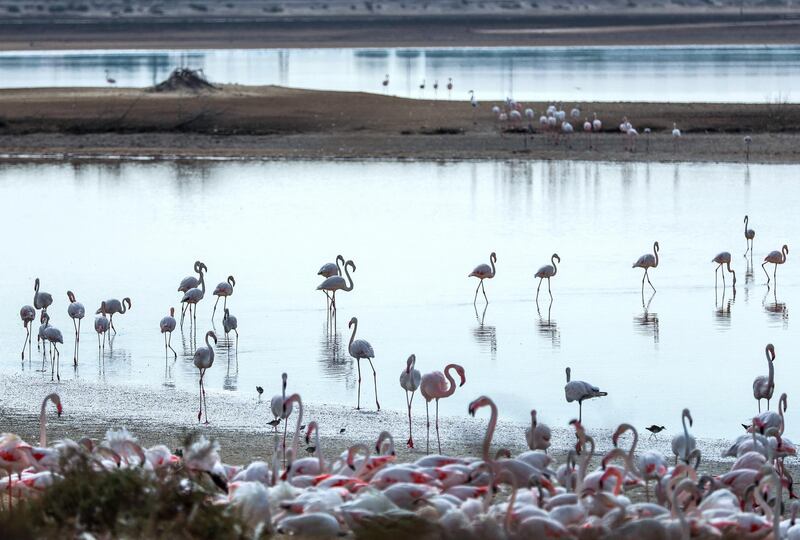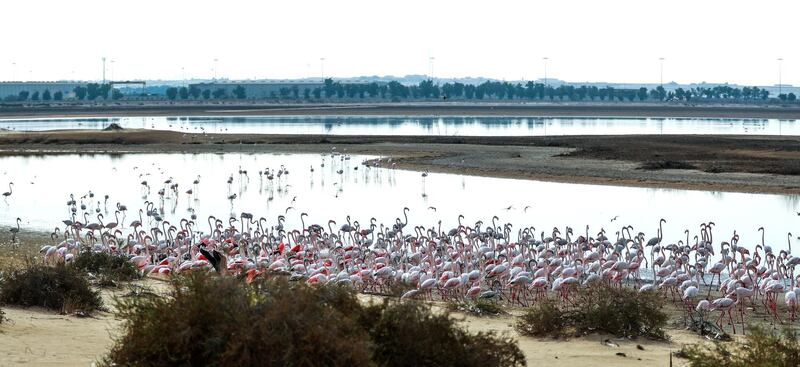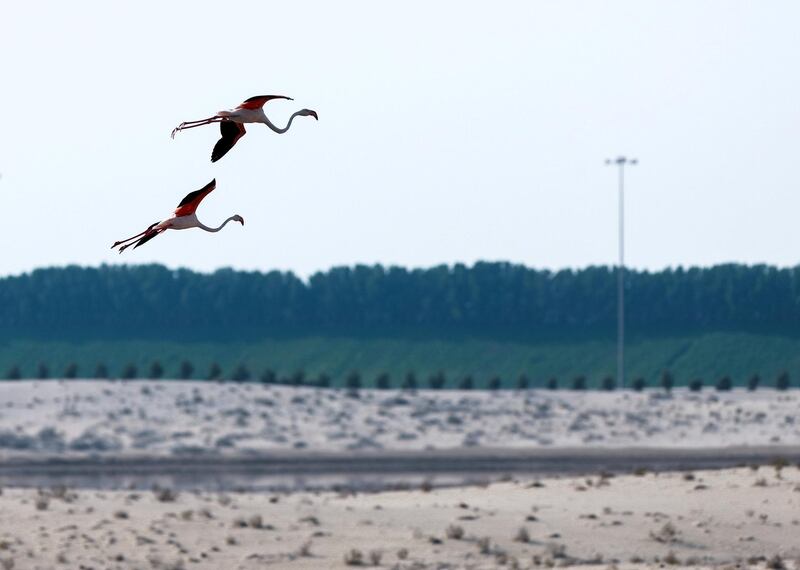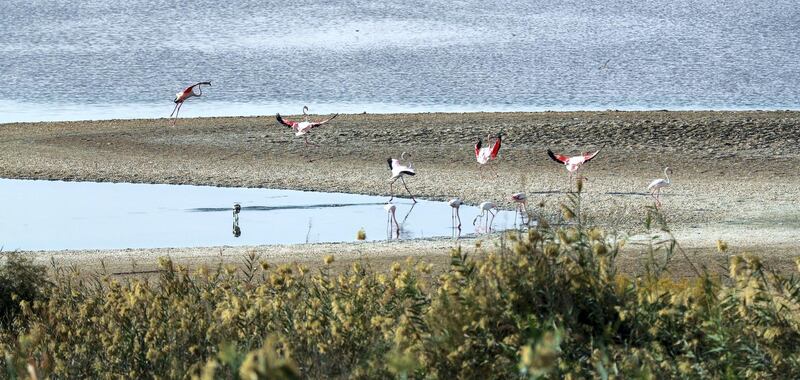The migrations of 10 frequent flyer flamingos are being tracked by satellite as part of a celebration of UAE wetlands conservation.
The Abu Dhabi Birdathon – launched by the Environment Agency Abu Dhabi and Etihad Airways – will count the air miles racked up by the flying squad to help better understand their migration patterns and raise awareness about Al Wathba Wetland Reserve, from which they are setting off.
The birds took flight on Tuesday and will be tracked until March 4 when the flamingo that reaches the farthest point will be the winner.
Since Al Wathba was established by the Founding Father, Sheikh Zayed, as a protected area in 1998 after observing the successful breeding of the flamingo for the first time at the site, the scheme has been launched to coincide with the Year of Zayed.
There are about 3,000 flamingos at the reserve, and the sea of pink is likely to increase when the migration season reaches its peak.
They begin to migrate to the area from August and settle there until mid February.
Each of the 10 tagged birds is being linked to major company, that will name the bird and encourage its staff and the public to follow its progress on the Birdathon website.
A team of six officials from the agency began setting traps to catch the participating flamingos to tag and release at 5am on Tuesday.
“We started setting up when it was really dark, so the birds didn’t see us,” said Dr Salim Javed, acting director of terrestrial and marine biodiversity at the agency.
The team waited from a distance for an hour until the first flamingo walked into the trap, with the second following 15 minutes later.
Details such as the bird’s weight and wing size were taken to make sure they were in good health, before a 45-gram tracker device was placed on them like a backpack.
Both birds were given some time to relax before being released at 8.30am.
_________________
Read more:
Abu Dhabi proves vital to growing population of greater flamingos
Al Wathba flamingo population booms — with a little help
‘Serendipitous’ Al Wathba Wetland reserves are home to more than 4,000 flamingos
_________________
As they fly, the solar-powered device will transmit the birds' location to a satellite connected to the Abu Dhabi Birdathon website, www.adbirdathon.ae, where people can track their journey.
The agency has been tracking birds’ flight patterns since 2005 and checked on one feathered friend’s travels for seven years. The Abu Dhabi Birdathon is a way to use these skills while raising awareness about a key ecological cause.
“We wanted to share our passion with broader partners to raise awareness about the importance of wetlands and understanding bird migration movements, so we track them to understand where they feed,” said Laila Al Hassan, a senior adviser and chair of the Year of Zayed team at the agency.
Organisations taking part in the Abu Dhabi Birdathon include the Department of Transport, Abu Dhabi Police, Masdar, Abu Dhabi National Oil Company, Abu Dhabi Airports and First Abu Dhabi Bank.
Two of the birds that were caught, tagged and released have been linked to the agency, which named its bird Istidama, and Etihad, which called Amelia after the first woman pilot to fly solo across the Atlantic Ocean, Amelia Earhart.
“Last year we had between 4,000 and 5,000 birds, but in the summer the figures dropped because the majority went back to Kazakhstan, Uzbekistan and Turkmenistan.
“It will be a sea of pink over the next few months,” Ms Al Hassan said, pointing to a section of the wetlands where dozens of flamingos had already gathered.
“We are encouraging people to track the flamingos by going to the website where they will be able to open up a world map and see the flamingos’ locations as they move outside of the UAE and stop to feed in other countries.”
Al Wathba is one of 19 protected areas in the UAE under the Sheikh Zayed Protected Areas Network and is home to 260 bird species, which rely on the lake and wet areas for breeding and feeding.

